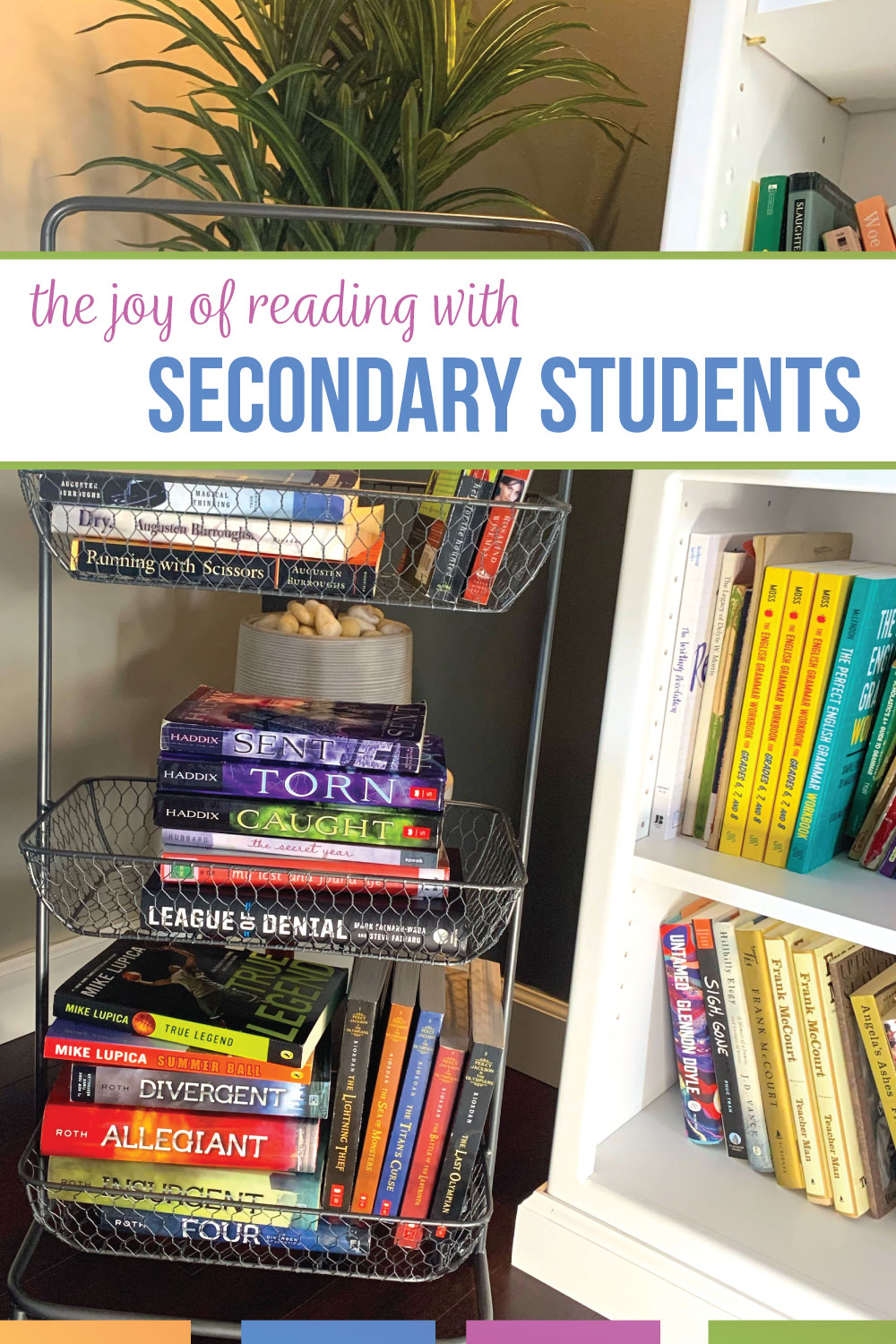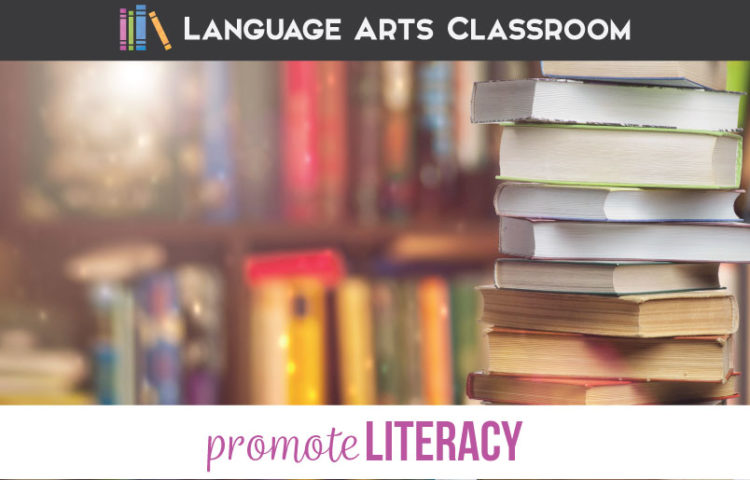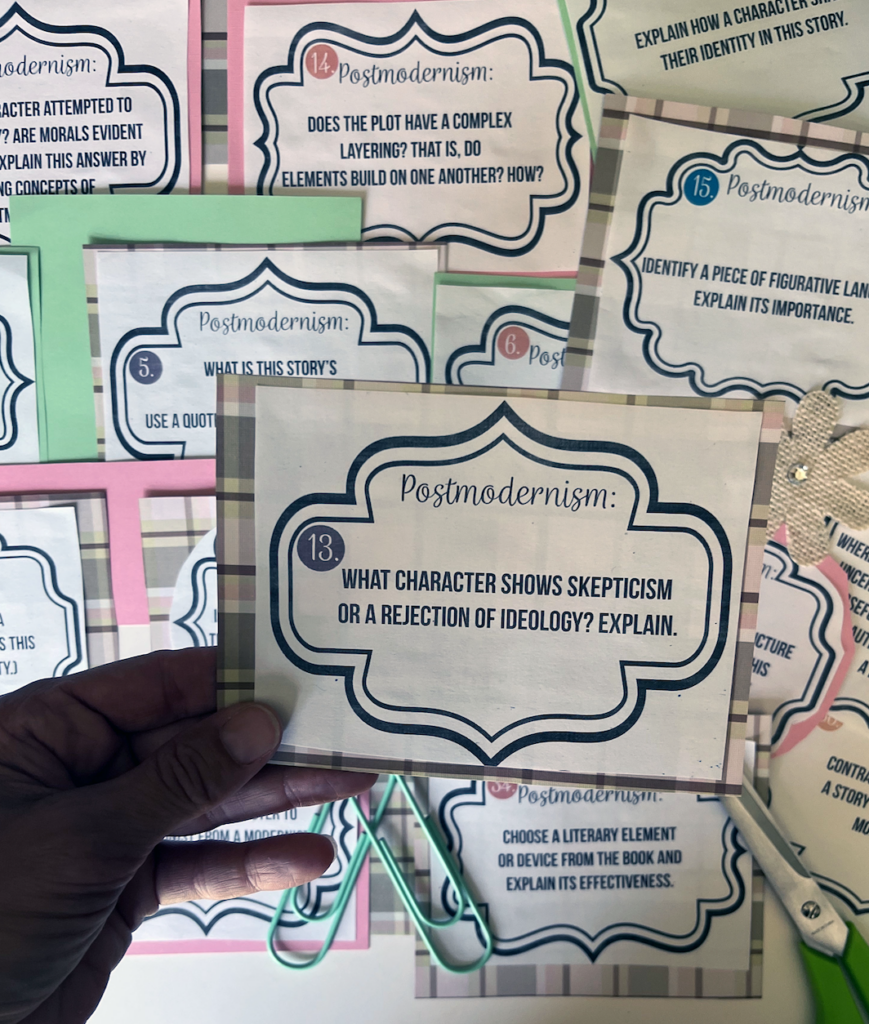What does research say about spreading the joy of reading with secondary students? We language arts teachers can encourage our readers to pick up books.
My personal children are younger than the students I teach. Not for long. . . but still. Sometimes what I read for my children inspires me in different ways concerning my students. For instance, I read research about pediatricians emphasizing reading to their young patients and their parents. The last line resonated with me:
Pediatricians are in a unique position to counsel high-risk parents about the joys, pleasures, and ultimate benefits of reading with their young children.
I’m obviously not a pediatrician, but the idea of joys and pleasures stayed with me.
So then, I searched for “the joy of reading” and found an article from The Atlantic. The interview with a veteran teacher was superb, but I still wanted information for reading with secondary students.
The longer I have taught, the more I see the “big” picture of education. Literacy and vocabulary acquisition for students are more than simple lessons. When educators write about classroom community, student relationships, classroom management, life-long readers, I think what they are all articulating in different forms is the way our lessons connect directly with students and the effect those lessons have on students forever.
And when I write about “lessons,” I don’t merely mean what I put in my calendar. I’m referencing what cannot always be articulated, what can’t always be quantified. So much of what we secondary ELA teachers do with reading builds literacy and makes students life-long learners.
To get students to engage with my classroom library and to spread the joy of reading with secondary students, I’ve developed inexpensive methods. They are below.

Provide bookmarks.
I love bookmarks, even if I don’t always use them. (Often, I have a receipt or gum wrapper stuck in the middle of a book.) Still, bookmarks can be beautiful and inspirational.
I set out a variety on bookshelves and encourage students to take one or two. They’re relatively inexpensive, are often pretty, and draw students over to the stacks of books. Sometimes, bookmarks are the draw to get students over to the library shelves.
Complete read alouds.
Previously, I’ve written about my success with read alouds with high school students. I confess that at first, I felt awkward. My students loved hearing stories, and their excitement encouraged me to continue. When a few extra minutes presents itself in class, I grab a book and read a few pages. Don’t worry about the formality of this. Read various books that you think students will find interesting.
Most commonly, I spread the joy of reading with secondary students through reading aloud with First Chapter Friday. Every Friday, I read the first chapter or first ten pages or so of a new book. Doing this allows me to share new genres, authors, and books with high school students. Since I do this every Friday, those read alouds are a bit more formal since students expect a read aloud on Fridays.
Model reading.
Share your passion for reading with secondary students with the simple act of modeling. When students are reading and building their reading stamina, read with them. In fact, sit alongside students who might struggle to lose themselves in a book. The modeling will help.
Plus, you’ll be spreading that joy of reading with secondary students. The message will be that “we all read.” Finally, you’ll have new topics to discuss with students, strengthening student-teacher relationships and thus helping classroom management.
Label and display for your community.
Every classroom community has different needs. Label your books and expectations as will work for you and your students. For instance, I have all my books in a (free) digital platform from Follett. With that program, I labeled my books how I wanted. I used genres, but teachers can decide if they want authors, popular series, anything.
Then I also vary the way I display my books. When I display books from my classroom library, I have different displays such as:
- Read it again: This display of books is simply from middle school that students can easily grab and settle to reading.
- Popular authors: I often include a QR code for access to the author’s social media.
- “Classics”: Students and I discuss who decides classics, what makes a classic, and on.
- Read with a friend: I set out pairs of books.
- Holiday theme: For instance, I’ll make a goofy display of romance books around Valentine’s Day.
- Connection to class: I set out books that deal with topics we are covering in class.
- Coming Soon!: An easy display? Books that are movies or TV shows are easy to display.
Most of my books are on shelves that students can easily access. I also change books around and vary the labels and displays. I never want my library to look stagnant, so I keep books rotated and label them in fun ways.
Interact with authors.
Typically when I read for First Chapter Friday, I display the author’s website, the publisher’s page, or an interview about the book. Other times, I’ll show students where they can find the author on social media. I’ve also had good luck with short clips on YouTube to introduce authors.
My goal? To spread the joy of reading with secondary students, I want students to understand that literature is alive. Books are not some tool that teach you how to read in younger grades or some piece in a research paper. Books are more, and literacy is important. With a few small and inexpensive tricks, I engage secondary students in my classroom library.



